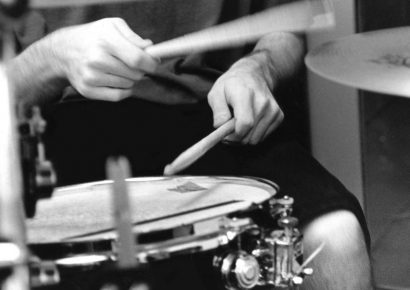
Figure A is a groove based around the low E string. All notes can be played with the right hand (fingers or pick!) but you can also try hammering D to E on beat 2 and B to C# on beat 3 of the first bar. In the second bar the semi quaver run on beat 3 can also get some hammer on treatment.
To extend that idea a little further, Figure B again works around the low E string but adds some more pull offs with a descending line of E, Eb and D broken up by the open G note. Beat 4 of the first bar is also a different use of two notes typically side by side on the fretboard (A and G) but that can also be played by utilising the open G note. Bar 2 copies a similar descending line that then leads to an Eb7 to E7 chord sound finished with another open Low E note.
Figure C is a moodier rock sort of vibe. Based around B minor, the first bar has the root note and then F# and G quavers played on separate strings. Experiment with getting both notes to ring (rather than chopping them off) and you get a wash of sound that’s almost a bit clashy but sounds great with the feeling of the root note (B) in your head. Bar 2 is a Gmaj7 type sound that uses open A, D and G. Again try getting the last two notes (F# and G) to ring out for some added tension. You can also try hammering on A to B and D to E for a smooth legato sound. Bar 3 is the same as Bar 1 and then we’ve got a D Major to E Minor sounding progression. The last two quavers of the riff walk up from A to A#, which creates some tension that then sounds like it wants to resolve to B (so repeat the riff a few times and get the feeling of that sound!).
Taking some cues from ‘80s rock Figure D is based around G Major and mixes crotchets, quavers and some open string goodness to mix things up. Bar 1 works over a G Major chord and utilises open D and G notes whilst Bar 2 has an E Minor sound. Nothing wrong with just pedalling low E, but this injects some extra melodicism with the F# and G and then the walk up from A and B to the C on Beat 1 of Bar 3. With a C Major sound it then leads to Bar 4 with a cool open D string pedal tone that is the basis of the ascending melody on the open G (C, D, E and F#). Possibly a bit corny for some, but hopefully at least opens up some options rather than just playing root notes and fretted notes the whole time! More next month.

